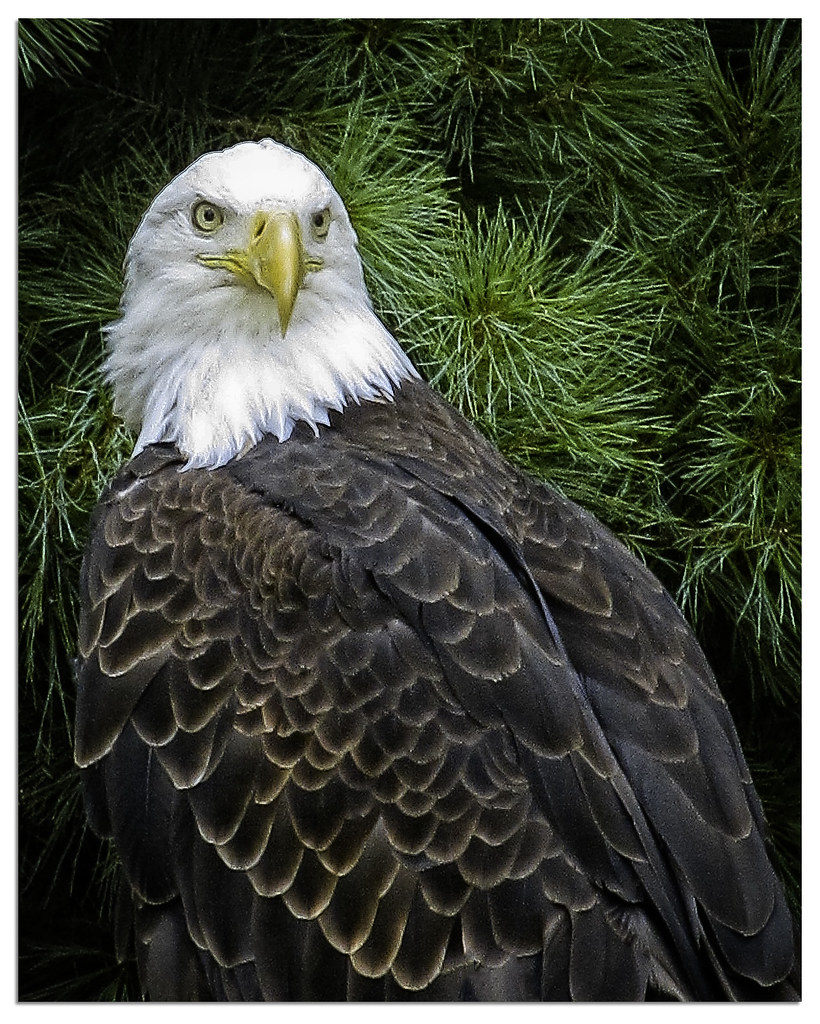 Helpful Posts: 0
Helpful Posts: 0
Results 1 to 4 of 4
Thread: Please Comment
-
2nd July 2011, 03:04 AM #1

- Join Date
- Jun 2011
- Location
- Michagan
- Posts
- 38
- Real Name
- Jaime
Please Comment
-
2nd July 2011, 03:47 AM #2
Re: Please Comment
From what I am seeing on your submitted images here at CiC, Jaime, you have a good eye on looking for interesting subjects to shoot. With proper guidance regarding composition and exposure control, you will easily improve your shots tremendously in no time. I would like to comment on your first shot.
1. You set your exposure a little bit high on this shot. No matter how much I adjust the recovery slider in Lightroom 3, I can't recover any more detail on the forehead of the eagle specially on the white feathers on his head. here is what I can recommend to you with regards to this kind of shots.
A. Whenever you see this kind of photo opportunity, practice looking at the scene and ask yourself "what part of the eagle do I need to be concerned of? I have dark and white feathers, what do I do now?" For me I would concentrate on the white feathers so as not to lose any detail on them. This is where practicing how to use the camera's spot metering would be very helpful to you. Set your camera to manual mode. Pick a workable aperture opening (probably f/4 or f/5.6) then set your ISO to about ISO 400. Look at the shutter speed then. If the shutter speed shows more than 1/(focal length of the lens you used) then you're good to go. Let's say the lens you used is set at 105mm. If the meter needle of your camera is at the middle exposure when pointed at the white feathers and the shutter speed indicates a speed of 1/500 second that would be great! However, the problem is - if you use this setting the white feathers would look gray or dirty white! You now have to do some "manual exposure compensation" to correct this. now, Manually adjust the shutter speed by increasing the exposure. from 1/500 second, set your shutter speed to 1/125 second, a + 2EV exposure compensation (but manually done). Why 2 EV? because that would set the white feathers at an exposure that would still keep it white in color and yet the detail and texture of the feathers are still noticed and can be seen.
A more practical way to learn this is to use your camera back screen for feedback. If you see that you're losing a lot of detail on the white feather areas, then decrease the exposure. If it looks too gray increase the exposure. this is where you need to learn the technical side of mastering your camera. You can correct some of your mistakes on the post-processing but only at a certain degree.
Here is what I came up with adjusting your image using LR and Photoshop:

As you would notice, by increasing the contrast and trying to do some detail recovery I was able to show more detail on the dark feathers but not much on the white ones. That's the problem if you did not nail the exposure right. If you shot this at RAW, we can still perhaps recover some more detail on the white feathers. Still, knowing when to use matrix or evaluative metering and when to use spot metering helps a lot in making good pictures compared to ordinary ones. With practice, you can do this before you actually take the shot. Hope this helps (although I have doubts since I may be too technical on my explanation here).
-
2nd July 2011, 05:22 PM #3

- Join Date
- Jun 2011
- Location
- Michagan
- Posts
- 38
- Real Name
- Jaime
Re: Please Comment
I didn't edit the photo this time but I have NO idea how to do that on my camrea I have an Power Shot SX130 IS it cant change it's lens..... Do you have any idea how to change the shutter speed on it???
-Jaime 12 years-




-
2nd July 2011, 05:49 PM #4
Re: Please Comment
I googled your camera model and I saw that it has M, Av, Tv, and P Program Modes. This means that you can somehow manually adjust the shutter and aperture on your camera. You have to read your user manual on how to do that. Your zoom lens works like a 28mm - 336mm lens so that could mean that you can work with your shutter speed handheld from 1/30 (if you have steady hands) to 1/400 second. You need to try to shy away using your camera's setting to P mode so you can learn more about photography in a serious manner. If you are really eager to develop your photographic skills (of which I see that you have a lot of potential) I would like to challenge you to save some money doing some chores for your family then in exchange for your services you could probably challenge your dad or mom (or both) to buy you a used DSLR off ebay. I bought mine last year for about $300 with lens which is only $100 more from the price of your camera. It doesn't matter if it is an old DSLR model, as long as it is working fine you'll learn a lot from it. make sure that a lens is included in the package so you won't spend too much. Mine came with an 18-70mm zoom which I use 90% of the time. Good luck.
Last edited by jiro; 2nd July 2011 at 06:00 PM.




 Reply With Quote
Reply With Quote